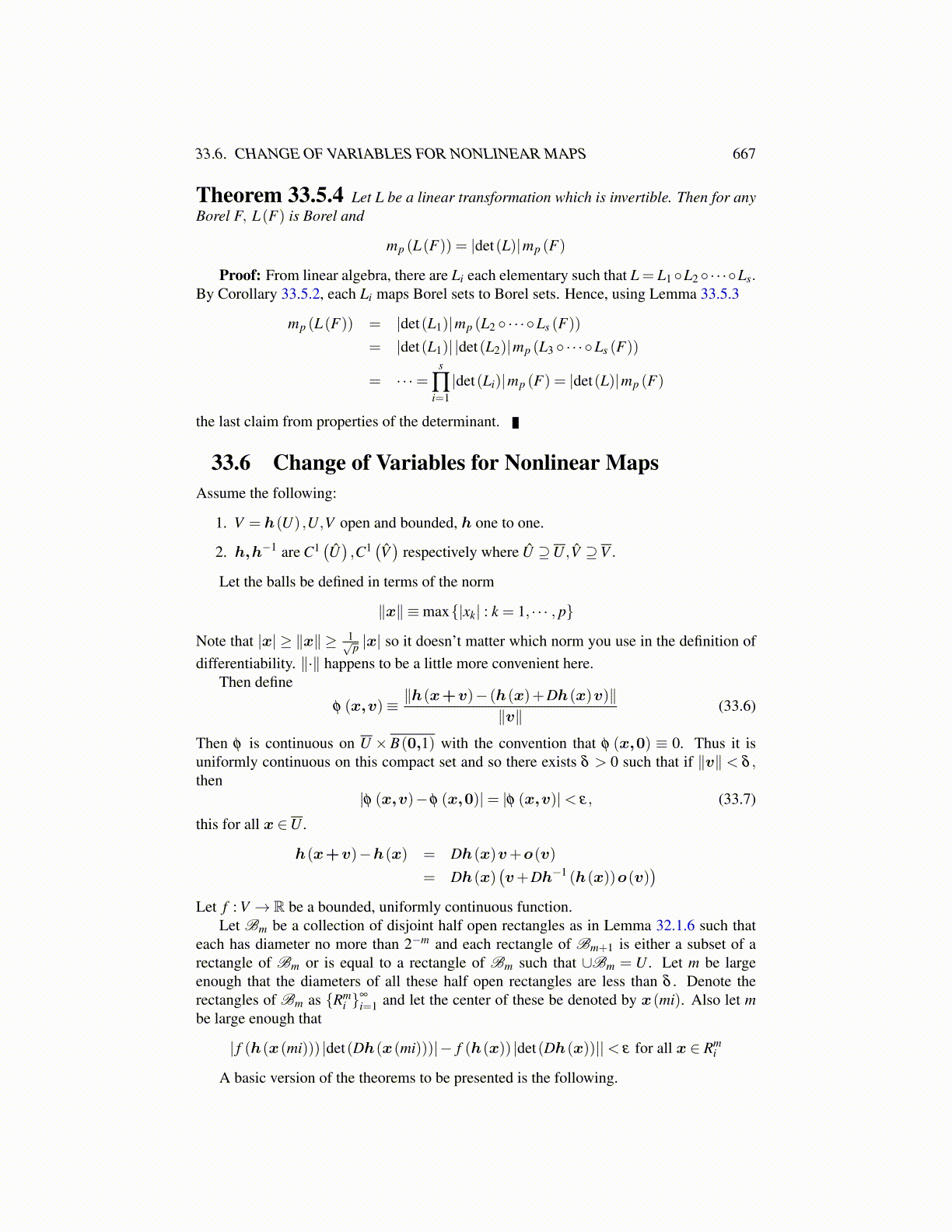
33.7. EXERCISES 667
3. ↑Let f (x) be as given above. Now let
f̂ (x)≡{
f (x) if x ≤ 00 if x > 0
Show that f̂ (x) is also infinitely differentiable. Now let r > 0 and define g(x) ≡f̂ (−(x− r)) f̂ (x+ r). show that g is infinitely differentiable and vanishes for |x| ≥ r.Let ψ (x) = ∏
pk=1 g(xk). For U = B(0,2r) with the norm given by
∥x∥= max{|xk| ,k ≤ p} ,
show that ψ ∈C∞c (U).
4. ↑Using the above problem, let ψ ∈ C∞c (B(0,1)) . Also let ψ ≥ 0 as in the above
problem. Show there exists ψ ≥ 0 such that ψ ∈C∞c (B(0,1)) and
∫ψdmp = 1. Now
define ψk (x)≡ kpψ (kx) . Show that ψk equals zero off a compact subset of B(0, 1
k
)and
∫ψkdmp = 1. We say that spt(ψk) ⊆ B
(0, 1
k
). spt( f ) is defined as the closure
of the set on which f is not equal to 0. Such a sequence of functions as just defined{ψk} where
∫ψkdmp = 1 and ψk ≥ 0 and spt(ψk)⊆ B
(0, 1
k
)is called a mollifier.
5. If you have f ∈ L1 (Rp) with respect to Lebesgue measure and ψk is a mollifier, showthat f ∗ ψk (x) ≡
∫Rp f (x−y)ψk (y)dmp is infinitely differentiable. Hint: First
show it equals∫Rp f (y)ψk (x−y)dmp. Then use dominated convergence theorem.
6. Let φ : R→ R be convex. This means
φ(λx+(1−λ )y)≤ λφ(x)+(1−λ )φ(y)
whenever λ ∈ [0,1]. The following picture illustrates what is about to be shown.
(y,φ(y))
φ(x)≥ φ(y)+λ y(x− y)
(a) Show that for x < y < z, φ(z)−φ(x)z−x ≤ φ(z)−φ(y)
z−y .
(b) Next show φ(z)−φ(x)z−x ≥ φ(y)−φ(x)
y−x . To do these, use convexity applied to y.
(c) Conclude φ(z)−φ(y)z−y ≥ φ(z)−φ(x)
z−x ≥ φ(y)−φ(x)y−x . In particular, φ(z)−φ(y)
z−y ≥ φ(y)−φ(x)y−x .
(Difference quotients increase from left to right.)
(d) Let λ y ≡ inf{
φ(z)−φ(y)z−y : z > y
}. Then for y ≥ x,
φ (y)−φ (x)≤ λ y (y− x)
Show that even if x > y, the same inequality holds. Thus for all x,
φ (y)+λ y (x− y)≤ φ (x)